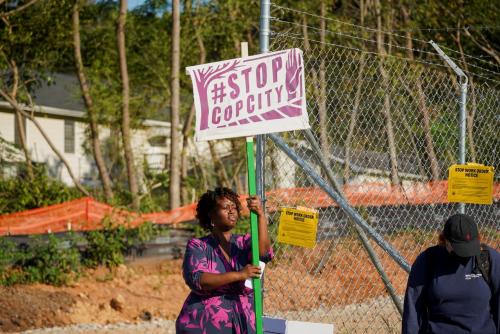As a growing number of natural disasters have hit vulnerable regions across the country in recent years, state and local leaders have explored a range of new investment strategies to better safeguard their infrastructure assets and ultimately provide greater protection for their economies. Many cities, for instance, are already leading in the development of resilient infrastructure projects and exploring non-traditional insurance options, such as resilience bonds.
While support from the Federal Emergency Management Agency (FEMA) has traditionally played a crucial role in this respect—namely through its Public Assistance Program—post-disaster funding can take years to secure, and it can often be difficult for states and localities to access and distribute disaster aid effectively. At the same time, federal agencies face increasingly constrained budgets and are searching for ways to share financial responsibilities more with regions.
There is cause for optimism, however. A recent proposal by FEMA to create a new “Disaster Deductible Program” holds promise of mitigating long-term risks, reducing costs, and enhancing regional capacity to adapt to future disasters.
In short, the concept behind this new program is to require recipients—generally state, tribal, and territorial governments—to show that they have dedicated a predetermined amount of money to disaster recovery before FEMA would provide any financial assistance. FEMA’s consideration of new deductibles is part of a larger trend: federal disaster recovery resources are likely to have even more strings attached. Local governments, in turn, need to acknowledge the inevitable shift in federal funding and plan for it.
Given the enormous scale and complexity of coordinating such a response, though, states and localities must work together to develop more comprehensive funding strategies. One idea that we have proposed is to create new Resilience Flexible Spending Accounts (RFSAs) as part of the new deductible program. By linking deductibles to a new state account rather than paying into a general Treasury or FEMA account, RFSAs can help regions:
- Retain control over funding and maintain flexibility for local uses
- Create a more reliable source of rapid response funding
- Anticipate compliance with any future federal disaster deductible requirements
- Incentivize large-scale investments in risk reduction projects
Similar to many workplace flexible spending accounts that incentivize personal healthcare savings through pre-tax benefits, RFSAs can spur investments in risk reduction projects and systematically improve local resilience. For example, well-designed flood barriers, dune restoration projects, and seawalls can measurably reduce risk to hurricane and storm surge. FEMA could implement an equivalent to insurance companies’ safe-driver discounts—in the form of deductible adjustments—for all recipients that use funds for these types of risk-reduction activities.
The current model of post-disaster funding is broken. Recent efforts to improve disaster aid acknowledge that local governments must lead after disasters to ensure the speediest possible recovery options for residents and vulnerable communities. RFSAs are just one idea to put local leaders in the driver’s seat after disasters strike. Unless cities and states start the dialogue now on the future of disaster aid, it is unlikely that federal disaster assistance programs will be able to effectively serve the hardest hit communities long into the future.
The Brookings Institution is committed to quality, independence, and impact.
We are supported by a diverse array of funders. In line with our values and policies, each Brookings publication represents the sole views of its author(s).



Commentary
Investing in resilient infrastructure before disaster hits
June 6, 2016